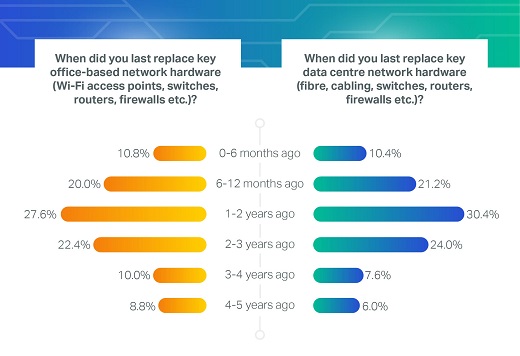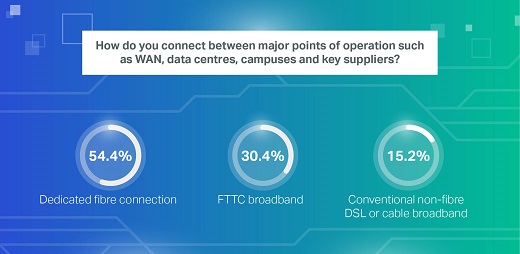When communications infrastructure is not refreshed as often as end points, such as servers and mobile devices, limitations can quickly manifest, writes Mervyn Kelly
The notion of a renewal cycle hasn’t really changed when it comes to IT. The accepted prime operating life of computers is roughly three years. Such is the pace of innovation and advancement, combined with the amortisation of asset value, after three years most equipment is obsolete. Having been superseded by significantly improved replacements, while the cost has been largely written-off the balance sheet. That’s before we even consider reliability. A three-year-old server running 24/7 will be more susceptible to business-disrupting hardware failure.
The same challenges extend beyond the desktop, the data centre and the mobile device. Consider the networking infrastructure that these devices connect to, especially in an age where each user owns and continuously uses multiple devices. The Wi-Fi routers, the Ethernet cabling, the fibre optics linking data centres together, the broadband and other WAN connections coming in and out of the network, the links between buildings on a campus, and the switches and routers that stitch everything together. Communications infrastructure is also prone to wearing out, and just as likely to be superseded by new equipment offering more features, better performance and added value.
Like with the lottery, you must “be in it to win it”, and not investing in regular hardware refreshes of infrastructure to match investments in end points will mean that advances in networking technology will be missed out on, while the full communications potential of your new end points will be potentially throttled. In simple terms, no one wants to see their boss struggling to connect to the network because the outdated network infrastructure doesn’t support the latest technology included in their new high-end laptop or smartphone.
How old is old?
Recent independent research looked at how long 500 businesses in the UK and Germany were sweating their infrastructure assets. This research revealed that nearly one fifth (19.2 per cent) of the 250 UK businesses interviewed are running ageing office networking infrastructure. A further 14 per cent are doing the same in the data centre. By ageing, we mean infrastructure that is more than three years old, so that it will likely be older than the oldest user or server end point in service.

The research further revealed that over a quarter are also relying on elderly WAN connections, with 27.6 per cent of British firms surveyed using a WAN link over three years old. What’s more, with significant improvements in bandwidth, cost of broadband and leased line technologies, 7.6 per cent are running services that have not been changed for as much as five years, also missing out on operational benefits and bottom line savings.

What are businesses missing out on?
So, what are companies potentially missing out on? If we start in the front office with Wi-Fi, there has been considerable advances, with 802.11n and 802.11ac protocols allowing the latest laptops, smartphones and other Wi-Fi-equipped hardware to move data around at upwards of 1.69Gbit/s. Older ‘n’ and ‘g’ Wi-Fi access points will be throttling these devices down to as low as 56Mb/s.
As for Ethernet, Gigabit is now commonplace on client hardware, while 10Gb/s is the minimum in the data centre for servers with 40 Gigabit Ethernet and 100 Gigabit Ethernet becoming the norm. If copper Ethernet cabling, switches and routers are not keeping pace with interfaces on the actual devices, then these too will be held back to lower standards and much lower data throughput.
When it comes to optical fibre, the advances are substantial. 100G, 200G and 400G connectivity services are becoming commonplace, with the latter two having been ratified in the last two years. Aging services and hardware means many organisations are missing out on this additional capacity. In particular, there’s the notion of flexible capacity, whereby operators and users of large fibre connections can push them to their absolute operating limits using the latest programmable hardware and associated software. For many, this can involve anything up to a 25 per cent increase in operating capacity on the same fibre connection – particularly important if you need to boost bandwidth between sites but want to avoid large capital outlay and the disruption of laying new fibre.
If there’s one key take away from this research, it is that a two-tier strategy for technology renewal cycles will always result in missed opportunities. New client and server hardware unlocks many benefits for users and the wider business. It makes little sense to curtail these by using obsolete network infrastructure that becomes a bottleneck for new IT investments instead of an enabler.
• Mervyn Kelly is Director EMEA, Ciena


